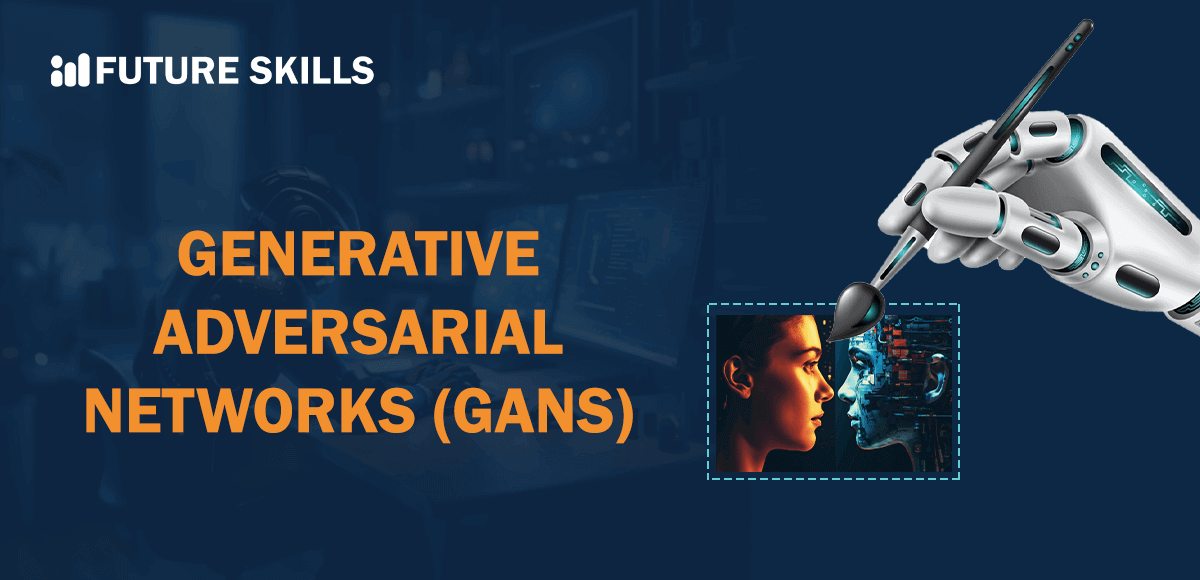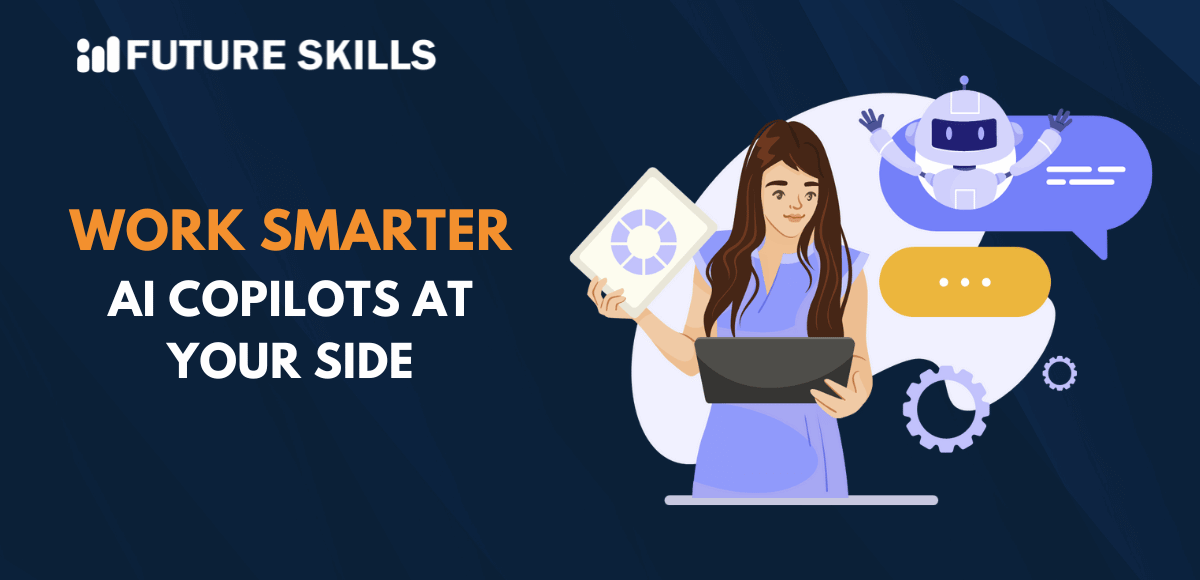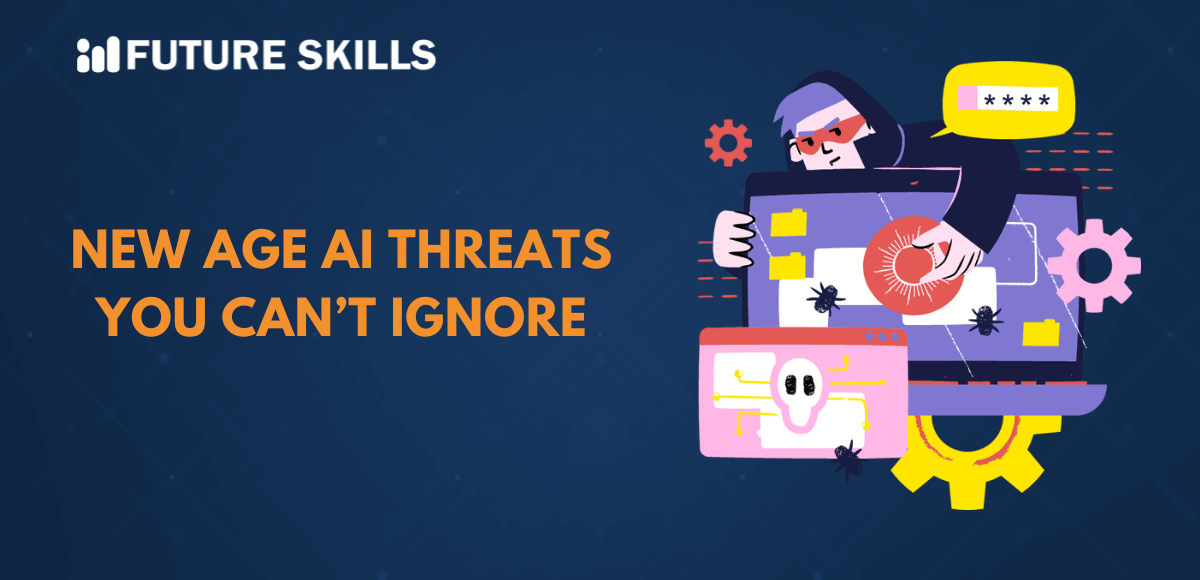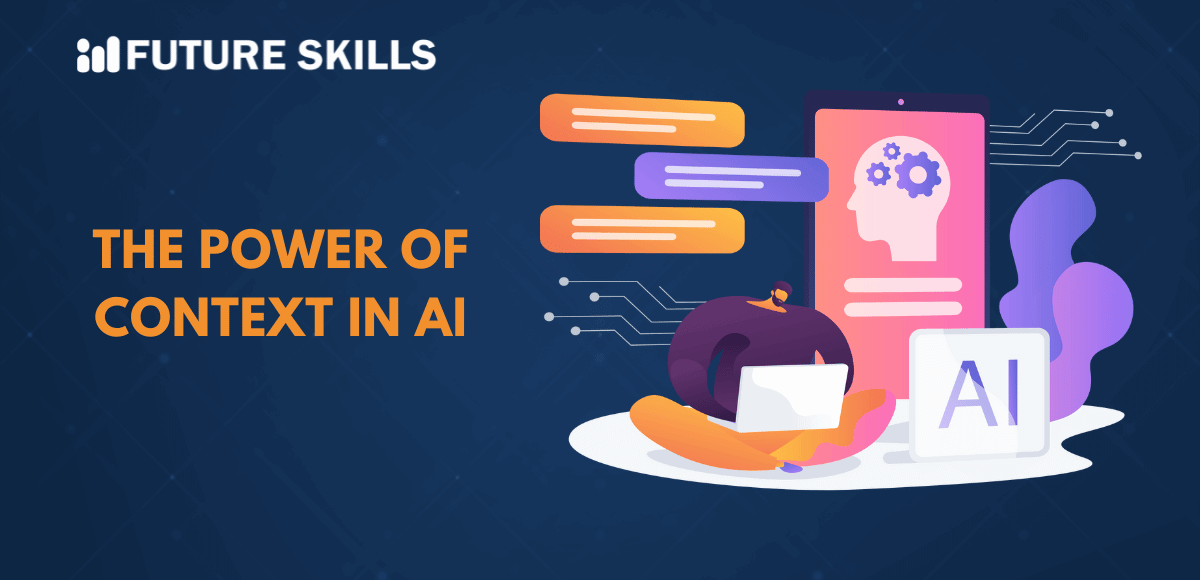Artificial intelligence has been pushing the boundaries of technological innovation and transformed many industries. The most important element that has been playing a crucial role in the growth of AI is the different types of models and algorithms. The definition of Generative Adversarial Networks or GANs proves how they have become a game-changer in the domain of AI. GANs have transformed the conventional approaches used for generating creative content, including artwork and music.
At the same time, Generative Adversarial Networks also work as catalysts for inducing major changes in the domains of healthcare, manufacturing, entertainment, and art. The effectiveness of Generative Adversarial Networks art shows how they can create synthetic content that appears extremely realistic. You can use GANs to enhance creative processes, optimize product design, and unlock many other possibilities. Let us learn more about GANs and their use cases.
Level up your AI skills and embark on a journey to build a successful career in AI with our Certified AI Professional (CAIP)™ program.
Definition of Generative Adversarial Networks

The best way to discover the potential of GANs and how they work is to understand their definition. The answers to “What is Generative Adversarial Networks?” can provide the foundation required to understand the functionalities of GANs. Generative adversarial networks are a type of machine learning model that can create images, text, or music that looks and sounds like they were created by a human. GANs utilize a unique approach to generate new synthetic data by using two neural networks that compete against each other. The two neural networks are known as the “generator” and the “discriminator.”
The “generator” is responsible for creating new and fresh digital content. On the other hand, the “discriminator” checks whether the output of the generator is real or fake. Repeated training ensures that the two neural networks get better at their tasks. The applications of Generative Adversarial Networks revolve around the adversarial relationship between the ‘generator’ and the ‘discriminator’ networks. The adversarial relationship creates an iterative feedback that offers mutually beneficial learning outcomes for both networks. At the same time, the GAN also develops the ability to generate high-quality data.
Generative Adversarial Networks have effectively harnessed the power of the adversarial relationship between ‘generator’ and ‘discriminator’ networks. As a result, GANs have successfully created a revolution in the domain of AI by supporting the generation of realistic videos, images, and other complex types of data. The continuous conflict between the generator and discriminator in GANs serves as the foundation of their effectiveness in creating new and realistic data.
Level up your ChatGPT skills and kickstart your journey towards superhuman capabilities with Free ChatGPT and AI Fundamental Course.
How Do Generative Adversarial Networks Work?
The realistic appearance of Generative Adversarial Networks art creates curiosity regarding their working mechanisms. What makes GANs capable of generating realistic images, text, audio files, or videos? The two most important components in the working mechanism of Generative Adversarial Networks include the generator and discriminator networks. Here is an overview of the different components that explain the working mechanism of GANs.
-
The Generator
The generator is a neural network in GANs that helps in generating new data samples. It uses a latent vector or random noise as input and creates synthetic data that appears similar to the target data distribution. In other words, you can assume that a generator is like an artist who attempts to create a new work from scratch.
If you want to learn Generative Adversarial Networks, then you must also notice that the generator leverages techniques such as batch normalization and deconvolution. It helps generate complex and high-dimensional data alongside effectively capturing intricate patterns, such as facial structures, details, and expressions.
The working of a generator network begins with the input of random noise vectors into the network through deep convolutional network. The generator transforms the noise vectors into images. For example, in the case of a human face, the generator would learn how to generate facial features, details resembling real faces and expressions.
-
The Discriminator
The discriminator is an important part of the answers to “What is Generative Adversarial Networks?” as it checks the generator. It serves as the critic or detective for the work created by the generator. The role of the discriminator network focuses on differentiating between real data from training set and synthetic data created by the generator. The discriminator trains to develop expertise in differentiating genuine outputs from fake work. In a GAN, discriminator networks offer feedback to generator and help in their continuous improvement.
Most of the guides to Generative Adversarial Networks or GANs showcase that discriminators use convolutional layers to develop an effective understanding of hierarchical features. It helps them analyze and differentiate complex patterns in images.
For example, in the case of human faces, the discriminator checks the generated faces and compares them with real human faces. The discriminator would learn how to find the subtle differences between real and synthetic facial features. Subsequently, it provides feedback to the generator for making necessary adjustments to enhance realism in the generated faces.
-
Training Process
The most important highlight in the working mechanism of GANs is the training process. You can find an iterative feedback loop between the generator network and discriminator network in the training process for GANs. The generator works on creating synthetic data, and the discriminator differentiates the real and synthetic samples.
The repeated iterations enhance the applications of Generative Adversarial Networks as the generator network learns from feedback by the discriminator and improves its performance. As a matter of fact, the generator ensures continuous adjustment in its parameters to create data that can be perceived as real by the discriminator. On the other hand, the discriminator can develop its capabilities for differentiating real data from synthetic data.
The subsequent back and forth between the generator and discriminator creates the possibility of convergence. Due to the convergence, the generator creates data that the discriminator could not classify as fake. At this stage, the GAN enters the equilibrium state, also referred to as Nash equilibrium. Once GAN achieves convergence, the generator would have the skills to generate data that closely resembles the target distribution. On the other hand, the discriminator gains proficiency in differentiating real from synthetic data with better accuracy.
The process of training Generative Adversarial Networks can be a challenging one. It focuses on discovering the ideal balance and stability between the discriminator and the generator. Researchers are consistently seeking techniques that can improve stability of the training process and address issues like mode collapse.
Excited to understand the crucial requirements for developing responsible AI and the implications of privacy and security in AI, Enroll now in the Ethics of Artificial Intelligence (AI) Course
What are the Operational Principles for GANs?
With an in-depth understanding of the working mechanism of GANs, it is important to learn about the important operational principles. Here is an outline of the most notable operational principles of GANs.
-
Discriminator Optimization
Discriminator network optimization involves the use of techniques like binary cross-entropy loss for updating biases and weights.
-
Generator Optimization
You can learn Generative Adversarial Networks optimization techniques for the improvement of the generator. GANs use techniques such as backpropagation to train generator networks.
-
Adversarial Feedback Loop
The adversarial feedback loop is another important component in the working of GANs, in which the discriminator offers feedback in the form of probability scores. Subsequently, the generator uses the feedback to adjust parameters.
-
Mini-Batch Training
The training process of Generative Adversarial Networks or GANs also involves the use of mini-batches of data samples. Every mini-batch includes a combination of fake and real samples, and the distinct training approach induces stability while enhancing the possibilities of convergence.
-
Regularization Techniques
Generative Adversarial Networks utilize different regularization techniques, such as batch normalization L1 or L2 regularization, to avoid overfitting. Regularization techniques also help improve the quality of generated samples.
-
Architectural Choices
Another important aspect that supports Generative Adversarial Networks art use cases is the flexibility for choosing the architecture of generator and discriminator networks. For example, you can choose convolutional neural networks, recurrent neural networks, or feed-forward neural networks. You can experiment with the GANs in different scenarios to optimize network architectures and hyperparameters.
Enroll now in the AI for Business Course to understand the role and benefits of AI in business and the integration of AI in business.
What are the Notable Variants of GANs?
You can find different types of Generative Adversarial Networks tailored for distinct tasks and applications. Any guide on GANs can help you find information about the different types of GANs, such as Vanilla GAN, conditional GAN, super-resolution GAN, or deep convolutional GAN.
Vanilla GAN is the most basic type of Generative Adversarial Network, while conditional GAN includes labels and attributes for generator and discriminator. Deep convolutional GANs derive their unique name from the use of convolutional neural networks in the generator and discriminator networks. Super-resolution GAN aims at improving the quality and resolution of images.
Final Words
The introduction to Generative Adversarial Networks, or GANs, provides a clear impression of how they work with two neural networks. Generative Adversarial Networks have gained popularity for generating content that looks and feels like human-generated content. Such types of machine learning models work by using the generator and discriminator networks, which compete against each other.
The iterative training process of the generator and discriminator networks, alongside the adversarial relationship between them, serves as the foundation of GANs. On top of that, the working of GANs also involves techniques such as mini-batch training, regularization techniques, and architectural choices. Learn more about GANs and how to use them to your advantage in different use cases now.





